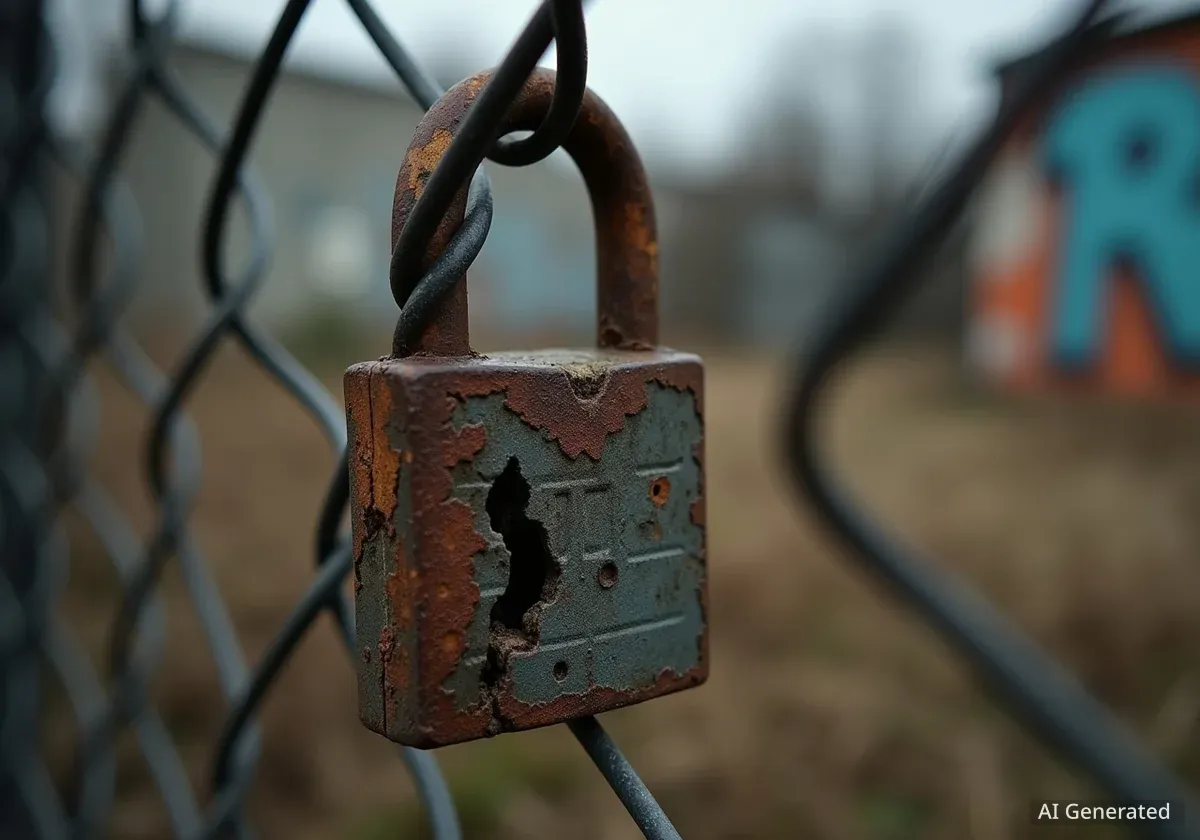A plan designed to recover millions of dollars for the city of Chicago by selling off properties from a notorious landlord has largely failed, leaving neighborhoods grappling with the same vacant, neglected lots and the city with a fraction of the anticipated funds. The properties, owned by Suzie B. Wilson, were so deteriorated from years of neglect that most found no buyers at auction.
This outcome highlights a significant challenge for municipalities trying to address urban blight through the sale of distressed assets. The bankruptcy settlement, once seen as a solution, has instead underscored the deep-seated problems of long-term property neglect in some of the city's most vulnerable communities.
Key Takeaways
- A portfolio of properties belonging to Suzie B. Wilson, dubbed Chicago's "worst landowner," was put up for sale as part of a bankruptcy plan.
- The properties had accumulated $15 million in city fines, primarily for rat-related violations and other code infractions.
- The city of Chicago approved the sale, expecting to recover millions of dollars in unpaid fines.
- The vast majority of the properties failed to sell due to their severe state of disrepair.
- The failed sales leave local communities with persistent blight and the city without its expected revenue.
A Legacy of Neglect
For decades, Suzie B. Wilson and her sister methodically built a vast real estate empire. Their portfolio was concentrated primarily in Chicago's poorest neighborhoods, where they acquired numerous residential and commercial properties.
However, the management of these properties led to a cascade of problems for the surrounding communities. Over the years, the buildings and vacant lots fell into severe disrepair, becoming hotspots for illegal dumping, overgrown weeds, and pest infestations.
A Staggering Debt
The extent of the neglect is quantified by the city's own records. Wilson's properties accumulated an astonishing $15 million in municipal fines. A significant portion of these penalties was directly related to severe rat infestations and other health and safety code violations that went unaddressed for years.
Residents living near these properties reported persistent issues that degraded their quality of life. The blighted lots not only posed health risks but also contributed to decreased property values and a sense of abandonment in already struggling areas.
A Bankruptcy Plan Meets a Harsh Reality
Faced with insurmountable debt, Suzie B. Wilson eventually filed for bankruptcy. This legal maneuver opened a new chapter in the saga, presenting what the city of Chicago believed was an opportunity to finally resolve the issue and recoup some of its losses.
The city government signed off on a bankruptcy plan centered on the liquidation of Wilson's real estate assets. The strategy was straightforward: sell the properties to new owners who would, in theory, clean them up and pay off the outstanding fines. Officials anticipated that the sales would bring millions of dollars into city coffers.
The Hope for Urban Renewal
For city officials and community members, the sale represented more than just debt collection. It was seen as a potential turning point for neighborhoods plagued by these derelict properties. The hope was that new, responsible owners would redevelop the lots, build new housing, or create community spaces, thereby reversing decades of decay.
However, the plan was predicated on a critical assumption: that there would be a market for these properties. When the assets were finally put up for sale, that assumption was proven wrong. The years of neglect had taken a toll that was too great for most potential buyers to overlook.
The Unsellable Properties
When the properties went to auction, the response was overwhelmingly negative. The vast majority of the lots and buildings received no bids at all. They were simply too rundown, too problematic, and too expensive to remediate for the average investor to consider.
The few properties that did manage to sell went for prices that were a mere fraction of their estimated value. The result was a financial disappointment for the city, which recovered only a small portion of the millions it was owed.
This outcome leaves the city and its residents in a difficult position. The bankruptcy process, which was supposed to provide a clean slate, has instead cemented the status quo. The ownership of the unsold properties remains in a state of limbo, and the physical blight continues to scar the landscape of these communities.
What Happens Now?
For the people living next to these weed-strewn vacant lots and crumbling structures, little has changed. The failed sale means there is no immediate prospect for a solution. The properties remain a source of frustration and a daily reminder of systemic neglect.
The situation raises difficult questions for municipal governments across the country that deal with similar issues:
- How can cities effectively compel negligent landowners to maintain their properties before they become unsellable?
- What mechanisms can be put in place when a bankruptcy sale fails to attract buyers for blighted assets?
- Are there alternative strategies, such as land banking or community trusts, that could be more effective in revitalizing these abandoned spaces?
As it stands, the case of Suzie B. Wilson's properties serves as a cautionary tale. It demonstrates that simply forcing a sale is not a guaranteed solution for deeply entrenched urban decay. Without a viable plan for redevelopment and a market willing to invest, the cycle of neglect is likely to continue, leaving both the city and its residents to deal with the consequences.





